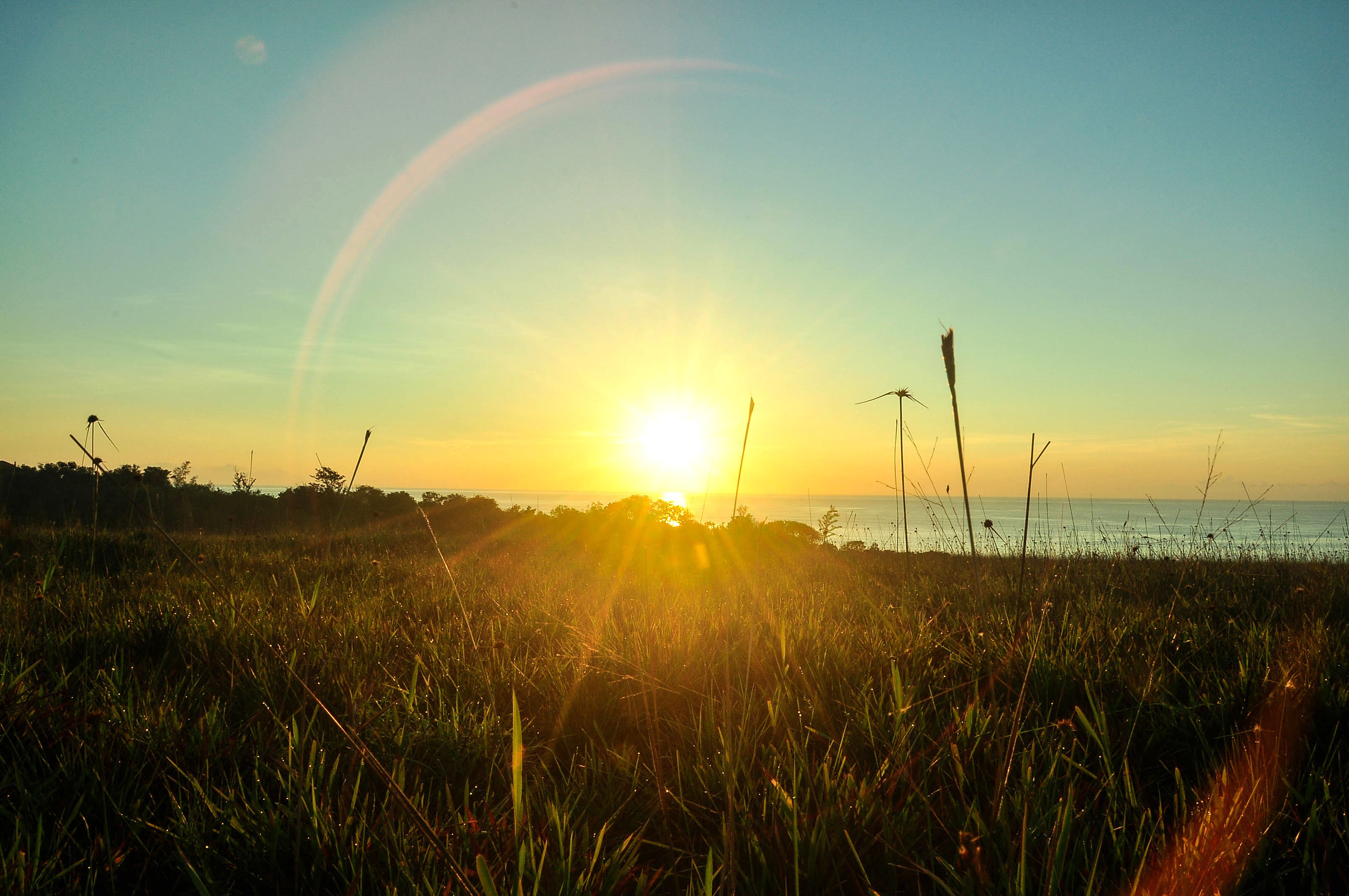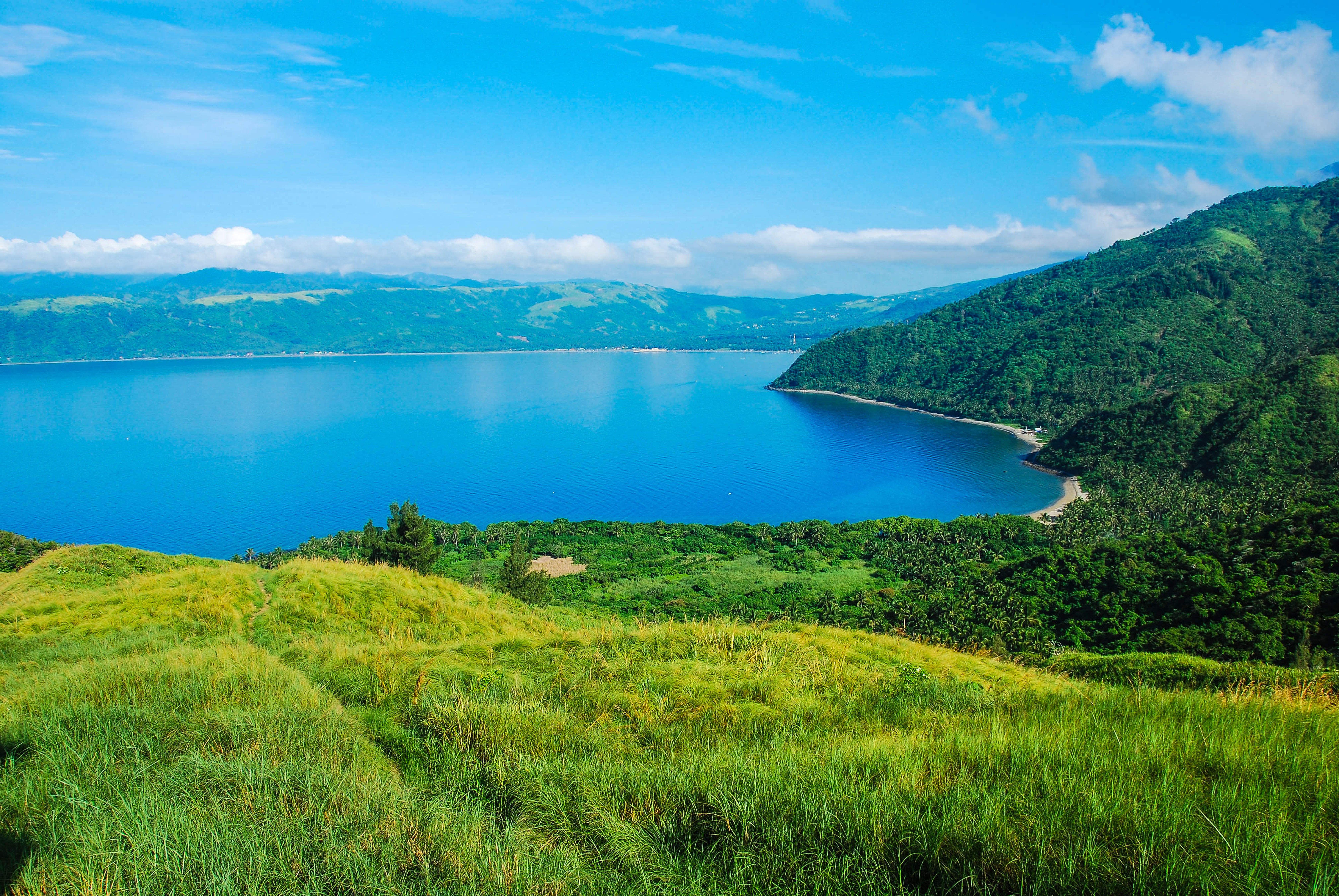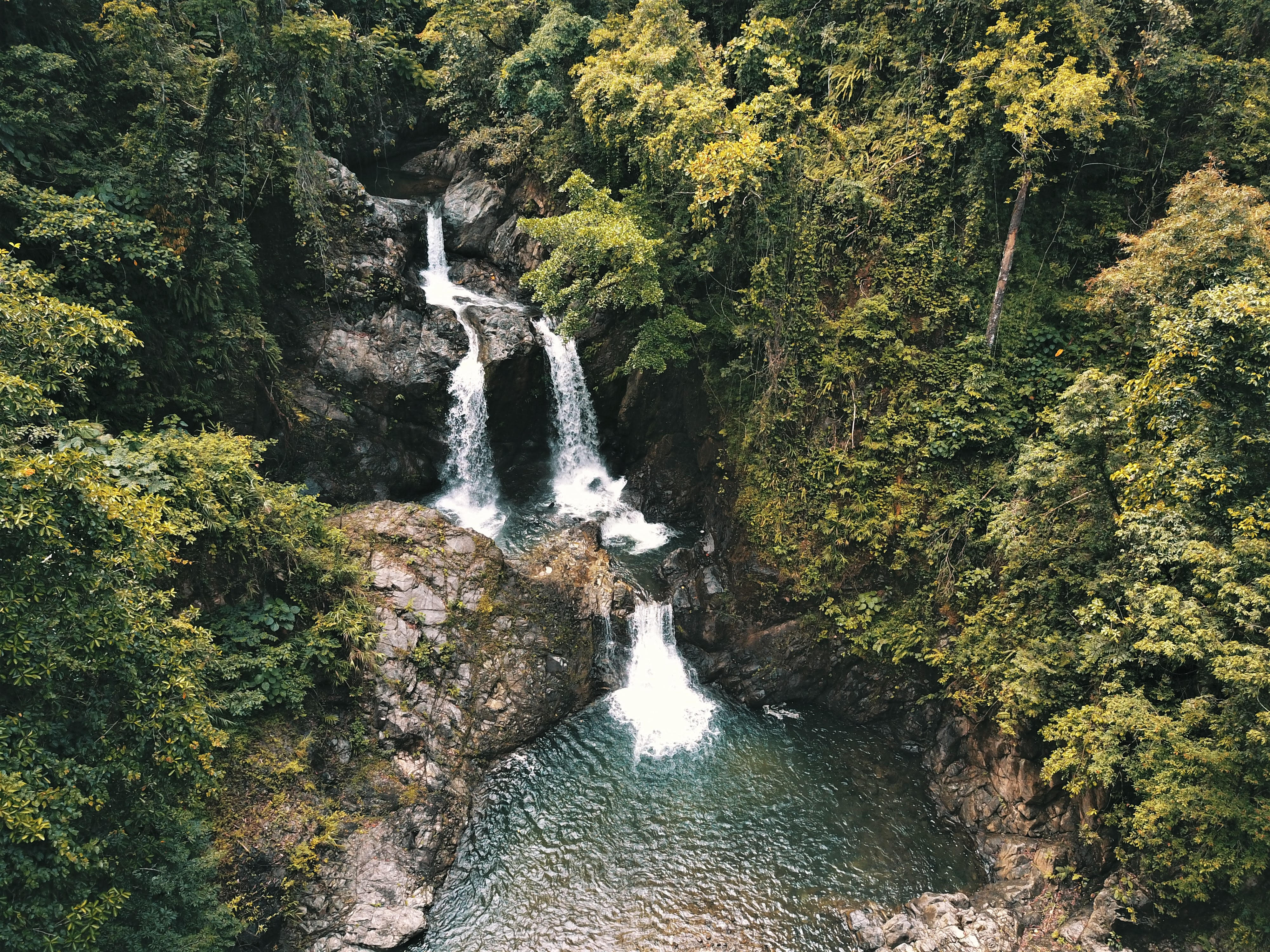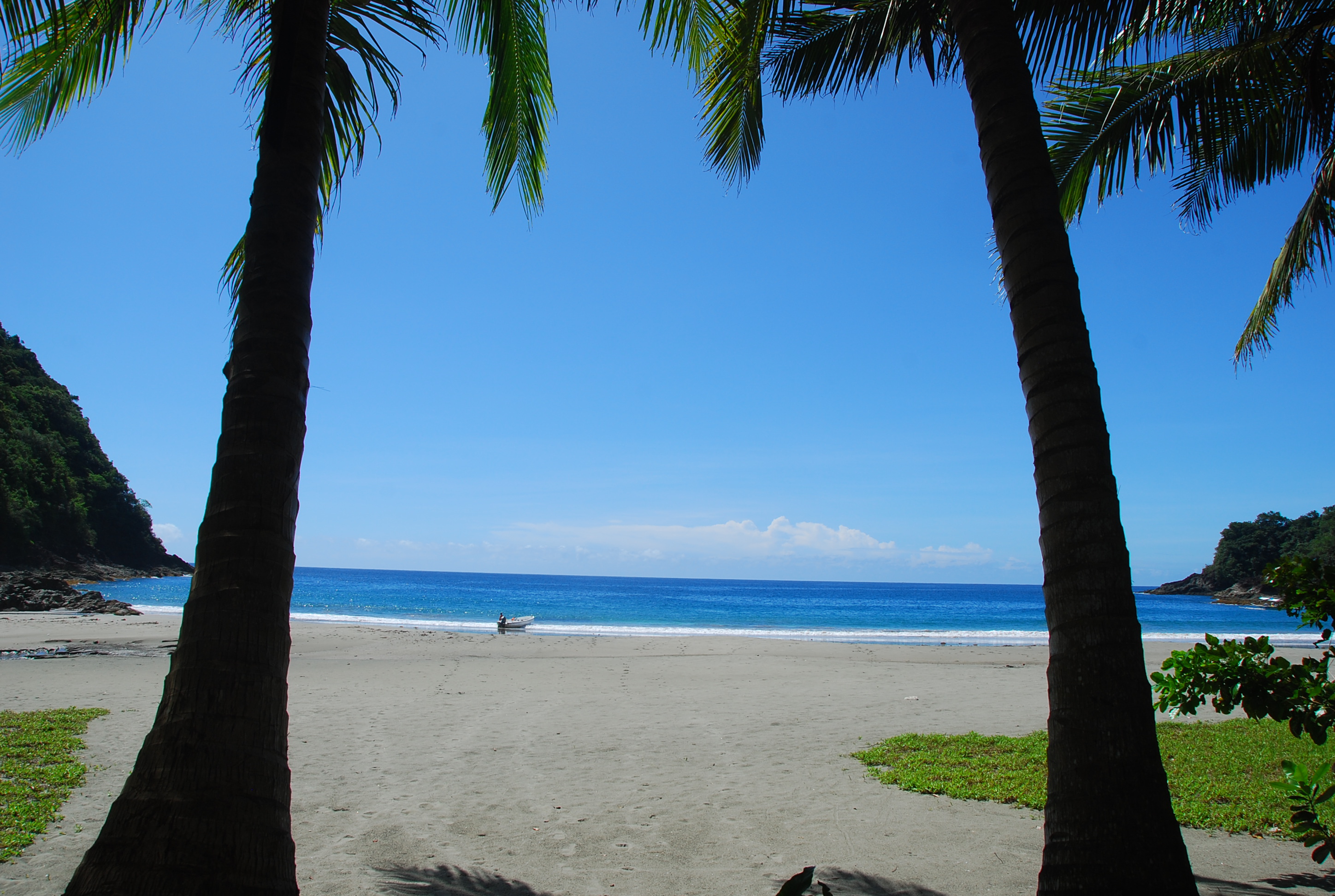
Baler
As the capital and the oldest city in Aurora province, Baler is considered the birthplace of surfing in the Philippines—lying in the mighty arms of the Sierra Madre mountain range, while alternately battered by the waves from the Philippine Sea and the Pacific Ocean.
Among the world-renowned surfing spot in Baler is the Sabang beach with its right-hand-and-left-break waves on a sand-and-gravel bottom. Although the surfing season occurs all-year round, the best waves appears from mid-September to early March, hitting its peak size between December and January. Other interesting sights in Baler are the Dikasalarin Cove, Dimadimalangat Islet, San Luis Obispo Parish Church, Aurora Aragon Quezon House, Museo de Baler, Quezon Memorial Park, Tromba Marina Monument and the Zabali Hanging Bridge.
Baler is a premier agricultural town with more than 50 percent of its population engaged in agriculture. Its major crops are coconut with over 2,600 hectares dedicated to its annual production of about 200,00 metric tons, and rice with 1,141.68 hectares and annual production of about 90,000 metric tons. Other Baler agricultural products are citrus fruits, banana, coffee, and seafood.
Casiguran
Casiguran is the most urbanized town among the Northern municipalities of Aurora. It is home to the Aurora Pacific Economic Zone and Freeport Authority or APECO, one of the special economic zones in the Philippines. It is the first green Ecozone with 12,923 hectares strategically located along the North Eastern Pacific Seaboard. As a gateway to the Pacific Region, it opens doors to a wealth of opportunities in the highly competitive and booming global market.
Most of the municipality's attractions are located by the shimmering waters of Casiguran Sound, an ideal locale for surfing, windsurfing, snorkeling and scuba diving, as well as simple relaxation. Motyong, the site of a small airport, is a beautiful white-sand beach with largely unspoiled scenery.


Dilasag
Dilasag is the northernmost town of Aurora and the least-spoiled with its lush forests and greeneries. Farming is a major source of income in Dilasag with rice, corn, coconut, banana and peanuts as primary crops. Rootcrops like sweet potato, cassava and yam are also found here, as well as vegetable and fruit-bearing trees like coffee, citrus, rambutan.
The municipality is known for its many white-sand beaches. The most popular is Canaware, a secluded lagoon with velvety sand and soothing waters. Parang Hills with its picturesque sunrise view with the Pacific Ocean and Sierra Madre mountain range. Masagana Mangrove with it is a crab-nesting area in its long-stretch of twists and turns of mangrove forest. Fascinating water bodies include Singep Falls and Dianao Beach.
Dinalungan
Dinalungan is located between the mountains of Dipaculao and Casiguran. Trees abound in its mountain areas, where forests and falls dominate the landscape, and rare exotic birds, such as the endangered Philippine Eagle, soar over untrammeled coastline. Because of its variety of natural attractions, the area is ideal for nature trekking.
It boasts several natural attractions, such as the pristine and majestic Bulawan Falls and the Mt. Anacuao. It is also habitat for a gamut of wildlife, particularly the Aurora Deer Parc, which is the home of the endemic Sambar Deer. Also, the Ditangol Marine Sanctuary, and Mabudo Marine Sanctuary where protected marine life and other organisms can be found.


Dingalan
Dingalan takes pride on its fertile land and long shoreline, running along the Barangays Butas na Bato, Ibuna, Matawe, and Umiray. The Matawe beach alone stretches over 400 meters across pristine sand and ocean water and unveils rock formations and tidal pools during low tide. The slopes of the Sierra Madre protect the Tanawan and Abungan Falls, which can only be accessed on foot, and are pristine places where you can swim serenely, surrounded by nature.
It is rich in potential, with its connections over land and sea. The Philippine Port Authority is already planning to connect Dingalan Port to the Marikina-Infanta Road through the West Philippine Sea. RORO feeder ports also run through Dingalan, making it one of the better options for both tourism and commerce.
Dingalan Bay is also one of the richest fishing grounds in Aurora, where blue marlin, yellow fin tuna, and tanguigue are commonly found. Local fishermen sell their catch daily, freshly caught from the sea. There are also thriving coral reefs, tidal pools, and pristine beaches for visitors to enjoy.
Dipaculao
Dipaculao is an untouched hidden paradise in the Aurora Province, accented with black and white pebbled coastline, rock formations, cliffs, cave beaches and a diverse wildlife, such as rare bird and fish species.
The town offers plenty of activities for divers, surfers, and ocean lovers. While cruising along scenic highway of Ampere beach, tourists have the option to dive among the coral reefs in Dinadiawan and Dibutunan; surf with the flawless waves of Lipit and Dianed; kayak with in the flat water of Dibutunan Cove and Pamwasa; ride a jetski or boat to see the majestic beauty of its coastlines; or take a dip in the crystal-clear waterfalls of Paningdingan, Mano, Luso and Mabilao-bilao.


Maria Aurora
Maria Aurora is the most populous and the only inland town of Aurora Province. Its main attraction is the Balete Park, home to the country's Millennium Tree, a centuries-old banyan tree that is the biggest in Asia. The historical and enigmatic Aurora Memorial National Park can also be found in Maria Aurora. As one of the Philippine national park, it supports the growth of agriculture, water supply, and other economic activities within the province.
Around sixty-two percent (62%) of the labor force is in engaged in agriculture, making it the dominant economic activity of the locality. A total land area of 7,317 hectares or almost nineteen percent (19%) of the total land area is planted with different crops dominantly rice and coconut, making it the largest agricultural locality within the province.
Aside from rice and coconut, the province is also abundant in legumes, peanut, coffee, banana, lanzones, rambutan, citrus, pineapple and papaya. The town also produce root crops, such as ginger, cassava, sweet potato, purple yam, gabi; as well as spices, such as hot pepper and bell pepper. Hat and mat-weaving, wood-carving, basketry and furniture-making are also among the flourishing industry in the municipality.
San Luis
San Luis is poised to become a dynamic transit point for trade and commerce within Southeast Asia and the rest of the Asia Pacific region as it is strategically located near the town of Baler and Casiguran—the future gateways to the Eastern Pacific Seaboard.
It is an ideal center for business with its vast natural resources, a literate and skilled workforce, and a business-friendly environment. For its efforts in attracting investments and streamlining business registration, the local government of San Luis has consistently recognized by the Central Luzon Growth Corridor Foundation, the regional body advocating sound trade and investment policy decisions in the central plains in the Philippines.



